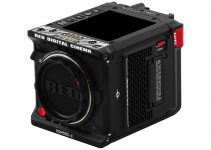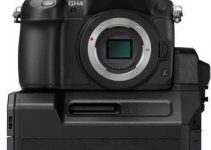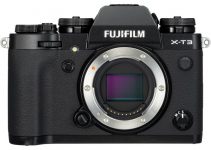There’s no way to escape the full-frame versus APS-C debate. Some people claim the format differences mean everything, while others say that in real-world use it can all look the same.
To really figure out what might be a better choice, we have to look at a comparison between two very similarly priced cameras that offer competing feature but with different sensor sizes. Enter the Sony a7 III and Fujifilm X-T4.
Both are great cameras that target the hybrid stills/photo market and come in at the sub-$2000 price point. The Hybrid Shooter explains that they take very different approaches to how they get to their goal – beyond just their sensors.
Sony has done wonders with the A7 III. It’s straightforward, great in video, solid in photo, and even its lesser features are decidedly average, which isn’t a bad thing considering the cost. It’s definitely targeting the higher-end amateur and lower-end pro market.
Fujifilm on the other hand seems to be looking at serious enthusiasts with the X-T4. The APS-C sensor manages to deliver outstanding photos and class-leading video in a retro-styled body. Both are well made and solidly built.
Obviously, we have to talk about the sensors. Sony uses a 24MP BSI full-frame sensor while Fujifilm went for the 26MP BSI APS-C sensor. This means Fujifilm wins ever so slightly in resolution while the Sony’s larger photosites (pixels) are less demanding and much better in low light. Also, you can get shallower depth of field with the full-frame sensor and the proper lenses.
As for dynamic range, both cameras seem to deliver excellent range, but Sony is a little better in high-contrast situations. To go more into detail on the low-light performance, The Hybrid Shooter found the A7 III to be about a stop better than the X-T4. The A7 III wins, but the X-T4’s latest generation X-Trans sensor comes close and will likely be plenty for most shooters. For color both are good, but Fujifilm’s Film Simulations are always a great option to have.
Autofocus is next and both use a phase-detect system. The A7 III is known to be reliable and works well in many situations, including tracking with Eye AF.
Video also has some good options and is nearly as good as stills. Fujifilm on the other hand offers stellar stills AF, but isn’t quite at the same level for video. Also, it’s eye autofocus is not as reliable at a greater distance. Video AF varies based on lens choose (newer are better) and while fast and responsive but may lose some smoothness.
Moving into video, both cameras shoot video with no crop. The A7 III is UHD 4K up to 24/25p without crop (30p is a slight crop). On the X-T4, it can actually shoot up to DCI 4K up to 30p with no crop or 60p with 1.18x crop.
The 60p is a huge advantage of the X-T4 since the Sony can’t do that at all. Fujifilm also dropped in some high-bitrate 10-bit 4:2:0 recording options, which blows away Sony’s 8-bit 100 Mb/s max. When using profiles, such as Eterna on Fujifilm or Cine4 on Sony, the X-T4 can work much better because of the greater color depth.
Fujifilm is definitely more advanced for video, though Sony is certainly no slouch.
Moving onto controls and handling, this may simply come down to preference. The Sony has fewer dials, but a larger, more comfortable grip. The Fujifilm has dials for everything and even moves up to an articulating screen if you prefer that. There are actually a ton more differences, but Fujifilm probably offers more physical controls. Both menus could be better though.
Media is the same pretty much with two SD card slots on each. However, Sony still has a UHS-I SD/Memory Stick dual slot in addition to a UHS-II SD slot whereas Fujifilm offers two high-speed UHS-II slots. Both also can charge over USB and has microphone inputs, but Fujifilm requires an adapter for the headphone out while Sony has that built-in.
Image stabilization is up next, and Fujifilm seems to be much better. It appears to be easier to maneuver the smaller APS-C sensor. Sony isn’t bad, but if you want the best IS between the two the X-T4 is clearly better. For viewing, the Fujifilm offers much higher resolutions for both the screen and EVF. The Sony has a slightly larger viewfinder, but it is still a lower resolution.
Sports and wildlife shooters will be plenty satisfied with either. Both offer 10 fps mechanical shutters, but the X-T4 gets a boost to 20 fps with the electronic shutter and even 30 fps with a 1.25x crop. Not bad. If you consider the Sony’s better AF system though, which The Hybrid Shooter does, then Sony still might be better for sports and wildlife.
Lens selection is a good comparison. Sony has a very large first-party selection and support from numerous third parties. Fujifilm is very good for first-party selections, though some of their early lenses could use an update since they aren’t all optimized for video and autofocus. Some third-party lenses are available, but not quite as many as Sony.
Summing everything up, The Hybrid Shooter would go with the Sony A7 III. Combining the full-frame sensor, stellar autofocus, and improved image quality it makes a lot of sense. Fujifilm isn’t a bad choice with the X-T4, in all honestly, it might be better for some people. A lot of this will come down to personal preferences and needs.
[source: The Hybrid Shooter]
Order Links:
Disclaimer: As an Amazon Associate partner and participant in B&H and Adorama Affiliate programmes, we earn a small comission from each purchase made through the affiliate links listed above at no additional cost to you.




